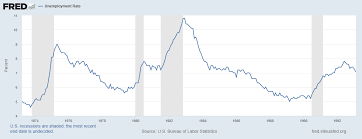On October 4, 1985, the United States was grappling with a significant issue that affected millions of Americans - unemployment. During this period, the country was experiencing economic challenges that resulted in a high unemployment rate and widespread joblessness. The 1980s were marked by economic fluctuations, including recessions and recoveries. The early part of the decade saw the United States recovering from the 1980 recession, but by 1981, the country entered another recession that lasted until 1982. The effects of these recessions were felt deeply, leading to job losses and a rise in unemployment. By October 1985, the unemployment rate in the United States had reached a peak of 7.5%. This meant that more than 11 million Americans were without jobs. The high unemployment rate had a profound impact on individuals, families, and communities, causing financial hardships and a sense of uncertainty about the future. The reasons for the high unemployment rate during this period were multifaceted. The recession of the early 1980s had resulted in significant job losses across various industries. Manufacturing, construction, and the automobile industry were particularly hard-hit. Additionally, changes in the global economy, such as increased competition from foreign markets, also contributed to the unemployment situation. The government's response to the high unemployment rate was a combination of fiscal and monetary policies aimed at stimulating economic growth and job creation. The Federal Reserve, for example, implemented measures to lower interest rates, making it easier for businesses to borrow money for expansion and job creation. Furthermore, the Reagan administration implemented tax cuts and deregulation policies to encourage business investment and economic growth. These policies were intended to stimulate job creation and reduce the unemployment rate over time. Over the next few years, the United States began to recover from the economic challenges of the early 1980s. The unemployment rate gradually decreased, and by the end of the decade, it had fallen to around 5.6%. The implementation of various economic policies and the natural cycle of economic recovery played a role in the decline. The high unemployment rate of October 4, 1985, serves as a reminder of the economic challenges faced by the United States during the 1980s. It highlights the impact of recessions and economic fluctuations on job markets and the lives of individuals and families. The response of the government and the implementation of economic policies aimed at job creation played a crucial role in the eventual recovery and reduction in unemployment. The lessons learned from this period have influenced subsequent economic policies and the understanding of the relationship between economic growth and employment. It underscored the importance of implementing measures to support job creation and address the needs of workers during challenging economic times. October 4, 1985, will forever be remembered as a day when the United States grappled with a high unemployment rate. The challenges faced during this period highlighted the importance of strong economic policies and measures to support job creation. The eventual recovery and decline in unemployment rate demonstrated the resilience and adaptability of the American economy.
4 Oct, 1985 U.S.A. Unemployment
